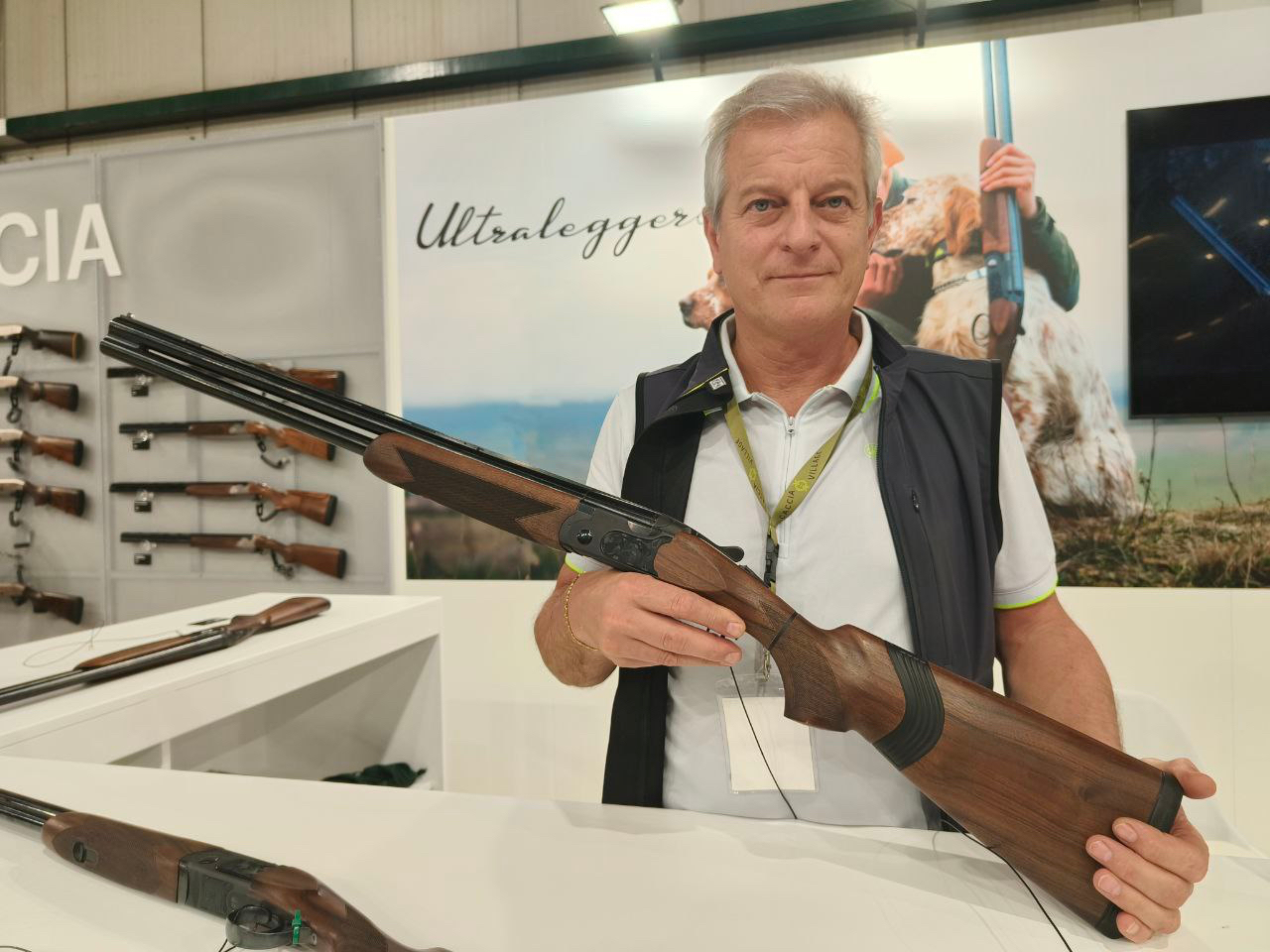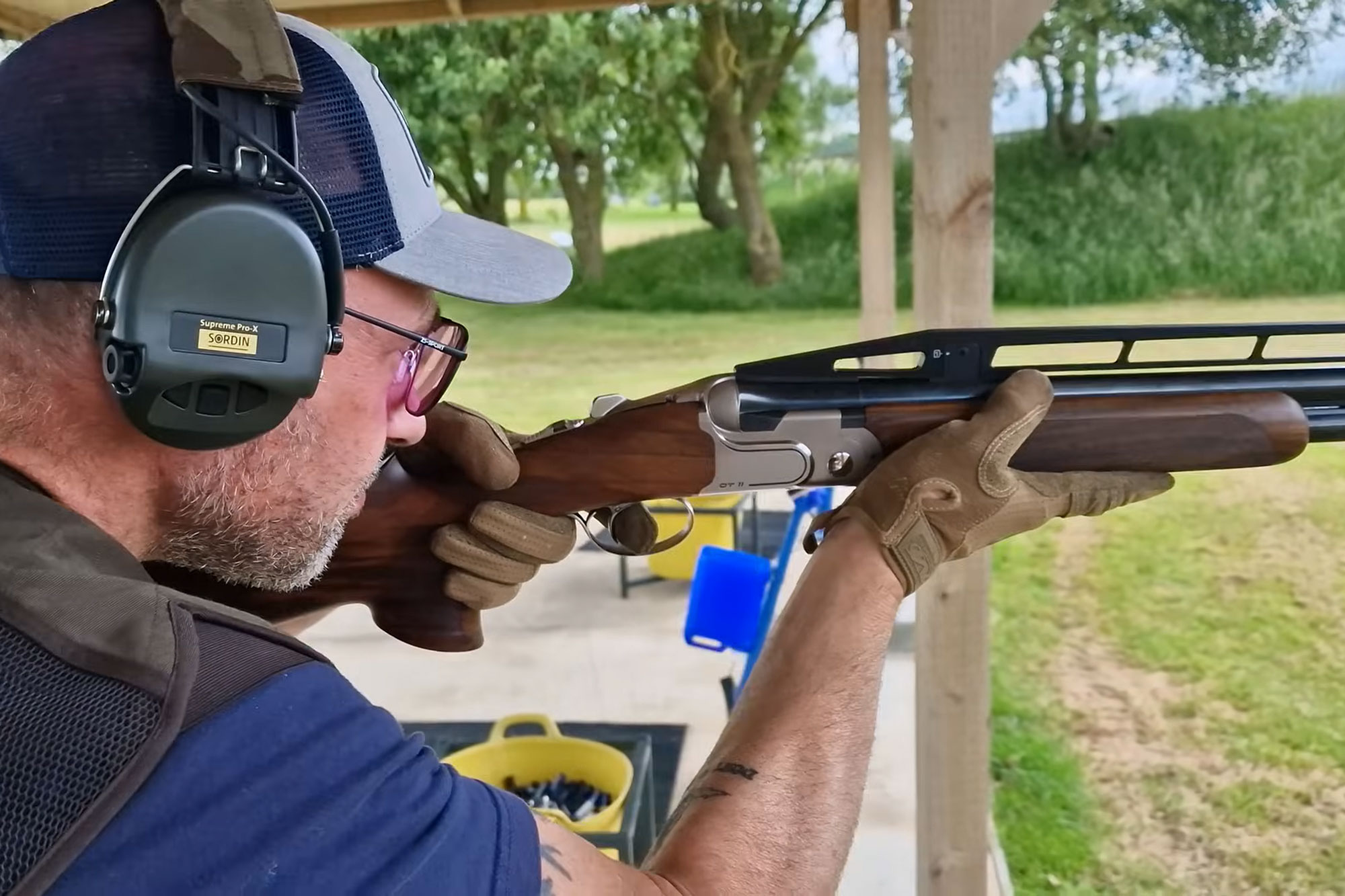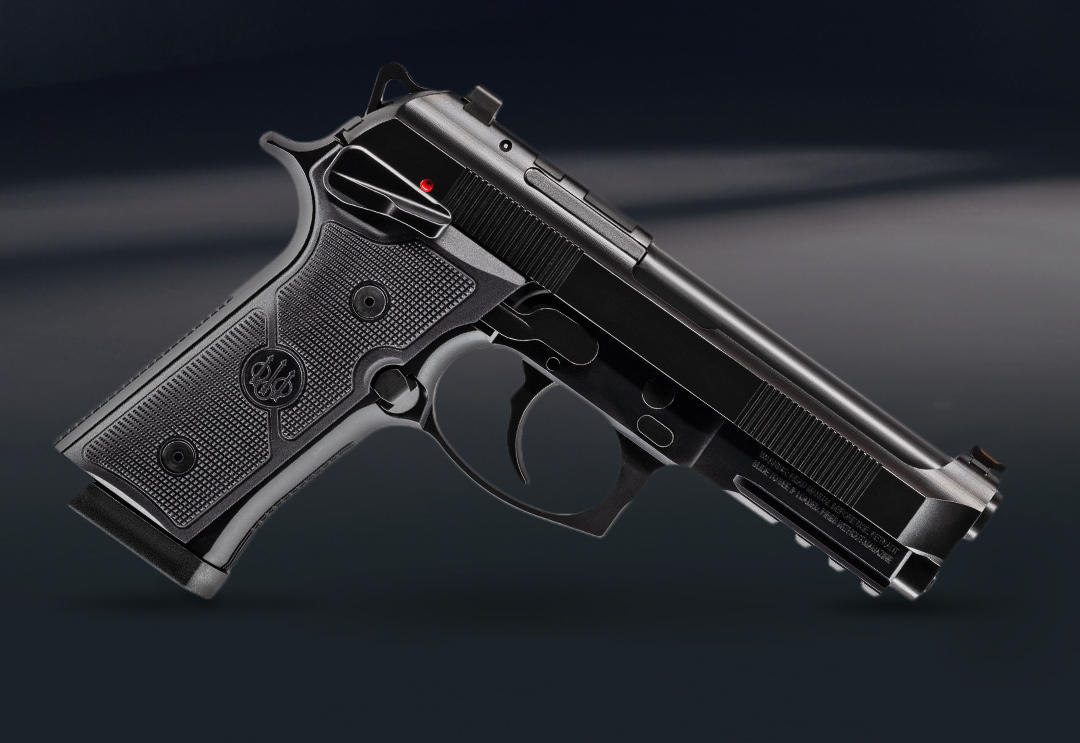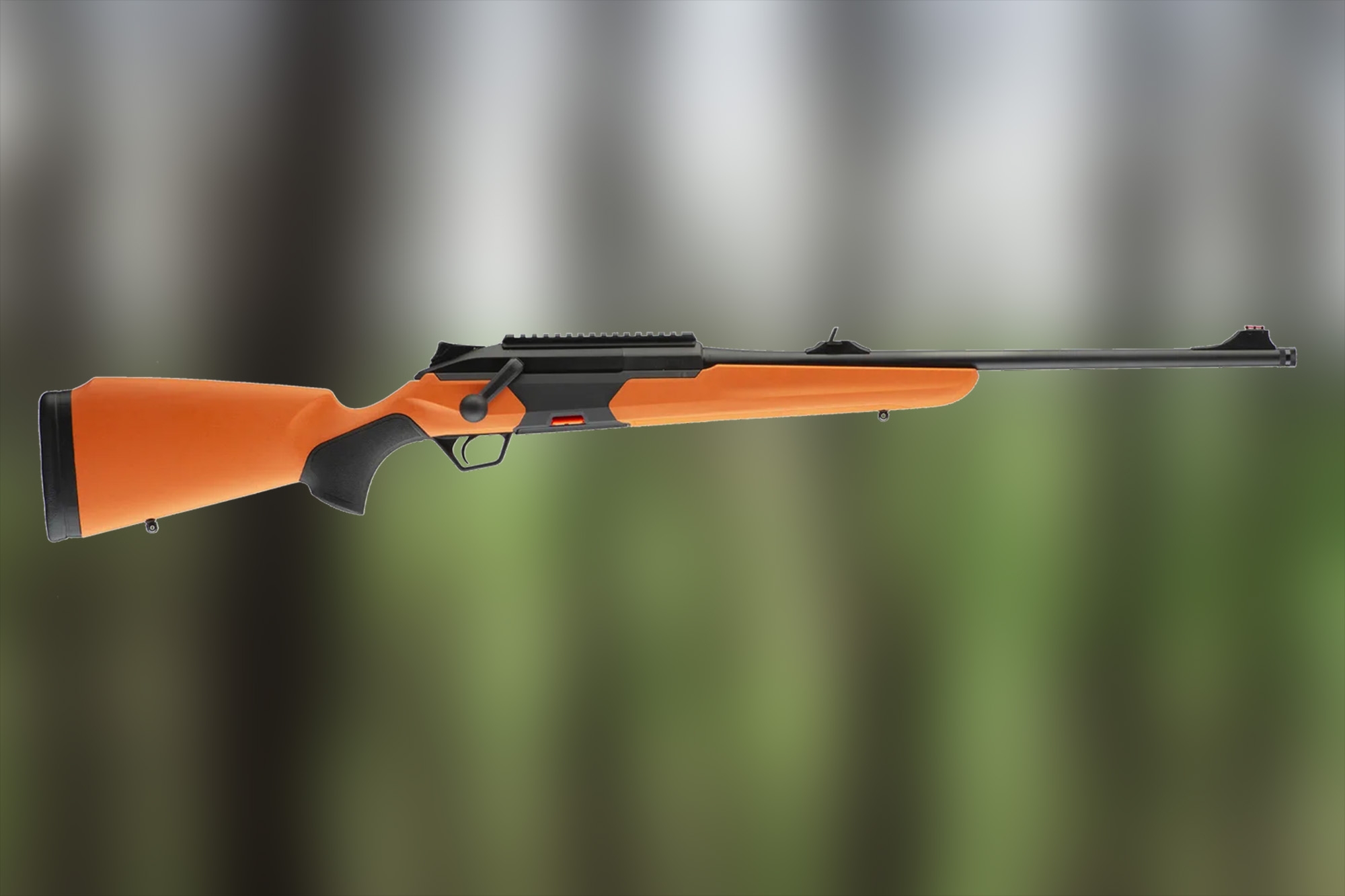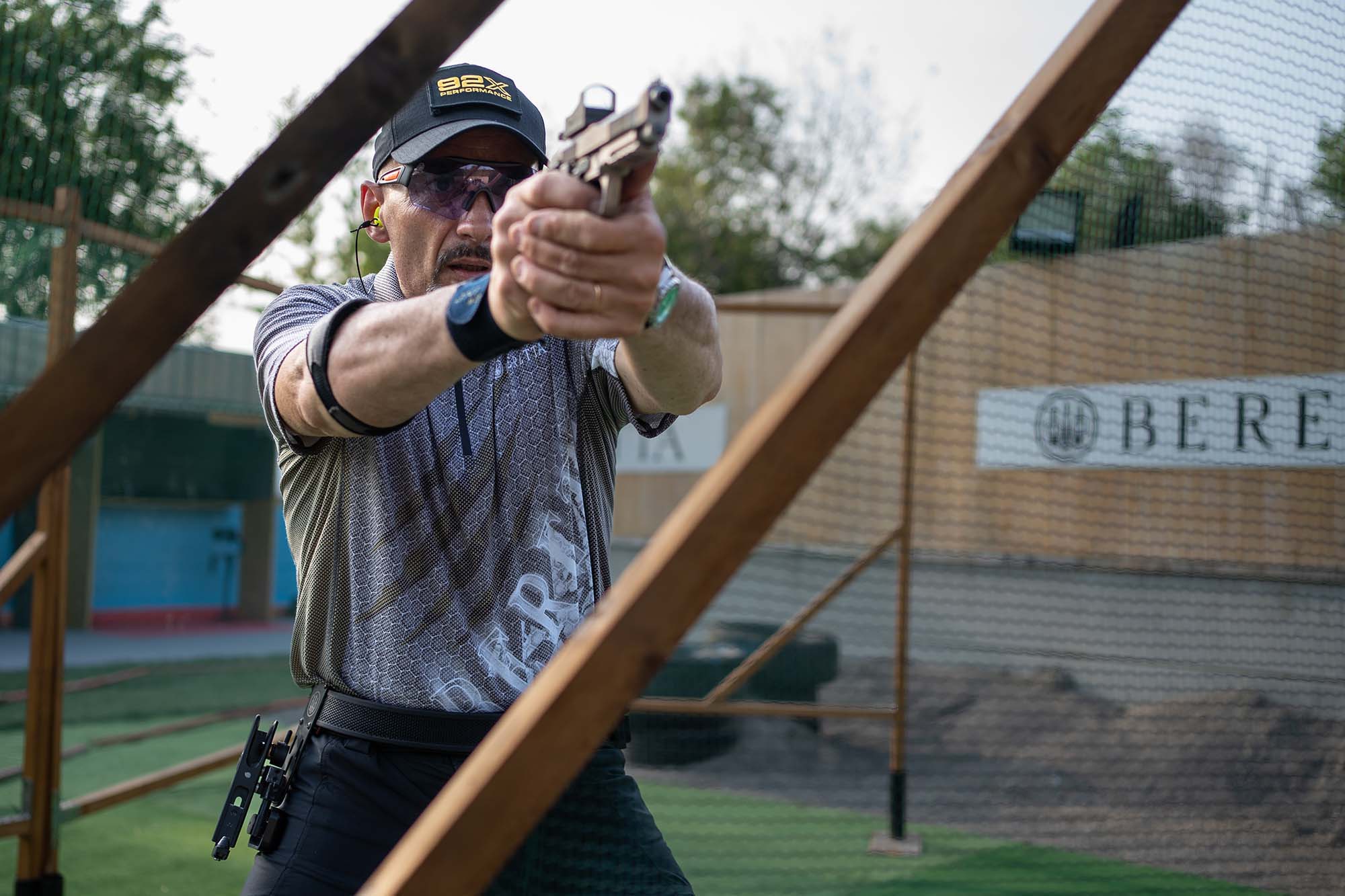Officially unveiled in 2017 during Milipol in Paris, the Beretta PMX is a submachine gun intended for professional use that ideally represents the successor to the M12, the service weapon of the Italian Carabinieri, police and Guardia di Finanza.
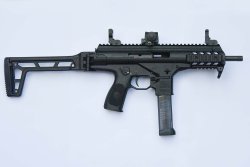
After a short period of experimentation, in 2018 the Carabinieri officially commissioned the first 5,000 examples of PMX, which will gradually replace the M12. In 2021, Beretta in a surprise move unveiled the PMXs for the domestic civilian market, with semi-automatic only firing mode, now available in both 9x21 and 9mm Luger calibers. We call this a surprise move since the Italian company, despite high demand, has always been reluctant to make a semi-automatic version of the M12.
Now enthusiasts will be able to appreciate the interesting qualities of this gun which, although very reminiscent (and it's no surprise) of its illustrious predecessor, differs markedly in its mechanical architecture and materials.
Video: Beretta PMXs in action
PMX, so similar yet so different
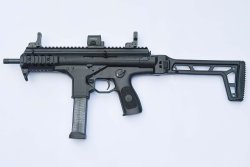
Let's start with the core, that is what at first glance is not apparent: the PMXs fires from a closed bolt, a major difference from the M12, which fires from an open bolt. To summarize, this means that in the PMX the closing of the bolt and the shot release are two separate and independent phases, while in the M12 the bolt closing and the firing, caused by a firing pin protruding from the bolt face, occur at the same time.
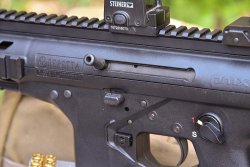
The open bolt firing system, while simple, has undesirable side effects, the first of which is the weapon instability caused by the bolt mass moving abruptly forward upon release. In terms of safety, weapons that fire with an open bolt are more prone to unintentional discharges if dropped (so much so that the M12 had a grip safety) and generally have more rudimentary and heavy triggers. Certainly this was a good compromise for manufacturing submachine guns in large quantities during wartime periods, but today's law enforcement guns must provide levels of safety that were unthinkable at the time.
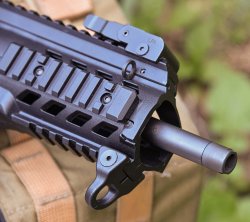
So although the structure of the PMX is very similar to that of the M12, its internal mechanism is completely different. In contrast, general functionality and controls position fairly closely replicate those of the M12 for one simple reason: economy in training time. For an operator used to the M12, the transition to the PMX occurs without any significant difference.
The position of the controls is very similar, with a selector lever similar to the M12's second version, but located on either side of the frame. The magazine release button is also ambidextrous, replacing the centrally located paddle release. The cocking handle, which on the M12 is fixed on the left side, can be swapped easily from one side to the other. The semi-automatic version has only a two-position fire selector, obviously lacking the full-auto capacity.
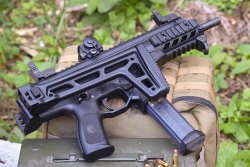
In terms of materials, the PMXs proves to be just as different from its progenitor, having a two-part receiver made of technopolymer. The upper receiver, within which the bolt slides, hides a tubular metal frame with a very low mass, so much so that the total weight of the gun is 2,400 g. The barrel is available in two lengths, 175 or 185 mm. PMXs is suitable for both PCC and IPSC practical shooting competitions, as well as the defensive shooting of IDPA.
The stock is made of polymer, folds to the right side, and features a double retention finger that offers maximum resistance in case of a fall. Its design still allows firing even in the folded position.
A full-length Picatinny rail allows any type of mechanical sights, optics and "co witness" combinations to be mounted on the receiver. As standard, the Beretta PMXs is delivered with a set of flip-up mechanical sights manufactured by Italian specialist LPA. Two additional Picatinny rails located around the barrel at 3 and 9 o'clock allow other accessories such as a front handle, flashlight and other optoelectronic systems to be attached to the weapon.
The Beretta PMXs is fed from 20-round double-stack magazines made of high-strength translucent polymer in a pleasing smoke coloring, for lightning-fast checks to verify how many rounds are in the magazine. A reinforced black rubber base pad makes it easy to handle the magazine and prevents it from being damaged when falling on the ground after release.
First contact with the Beretta PMXs
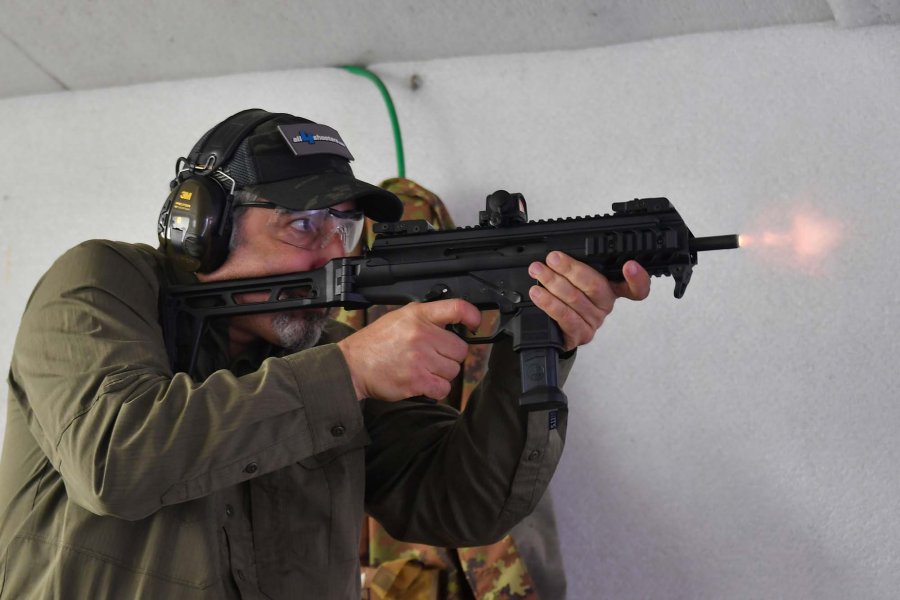
We had the opportunity to test the Beretta PMXs in depth at the range and first of all we appreciated its extreme ease of handling, also aided by its quite low weight and excellent balance. But what turned out to be surprising, for a weapon born for military use, is the trigger quality, which is crisp and consistent, allowing you to take full advantage of the gun's inherent accuracy, which for the occasion had been fitted with a Steiner MRS red dot sight mounted directly on the Picatinny rail. There is very little recoil, virtually no muzzle flip, and this allows the weapon to remain aligned with the target even when firing fast strings.
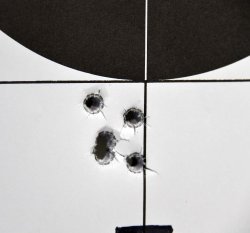
Certainly the PMXs will be able to give more than one satisfaction to sport users looking for a PCC that is not based on the M4 platform. The ambidextrous arrangement of controls and the possibility of accessorizing it offered by the numerous Picatinny rails on the receiver and forend should satisfy the tastes of even the most demanding "geeks". The economy of operation provided by the 9mm cartridge also makes it a gun with which to train frequently without fear of bankruptcy.
Finally, we applaud the excellent performance of the Steiner MRS "armored" red dot, which provides a very sharp sight picture.
To learn about all the other features of the Beretta PMXs and our shooting impressions, we invite you to watch our video.
Beretta PMXs specs and price
| Model: | PMXs |
| Caliber: | 9mm Luger (also available:
9x21) |
| Action: | Semi-automatic |
| Firing System: | Closed bolt |
| Barrel Length: | 175 or 185 mm |
| Magazine Capacity: | 20 rounds |
| Sights: | LPA flip-up front and back
sights |
| Weight: | 2,400 g |
| Price: | From
1,698 euro |
To learn more plese visit the Beretta website.



